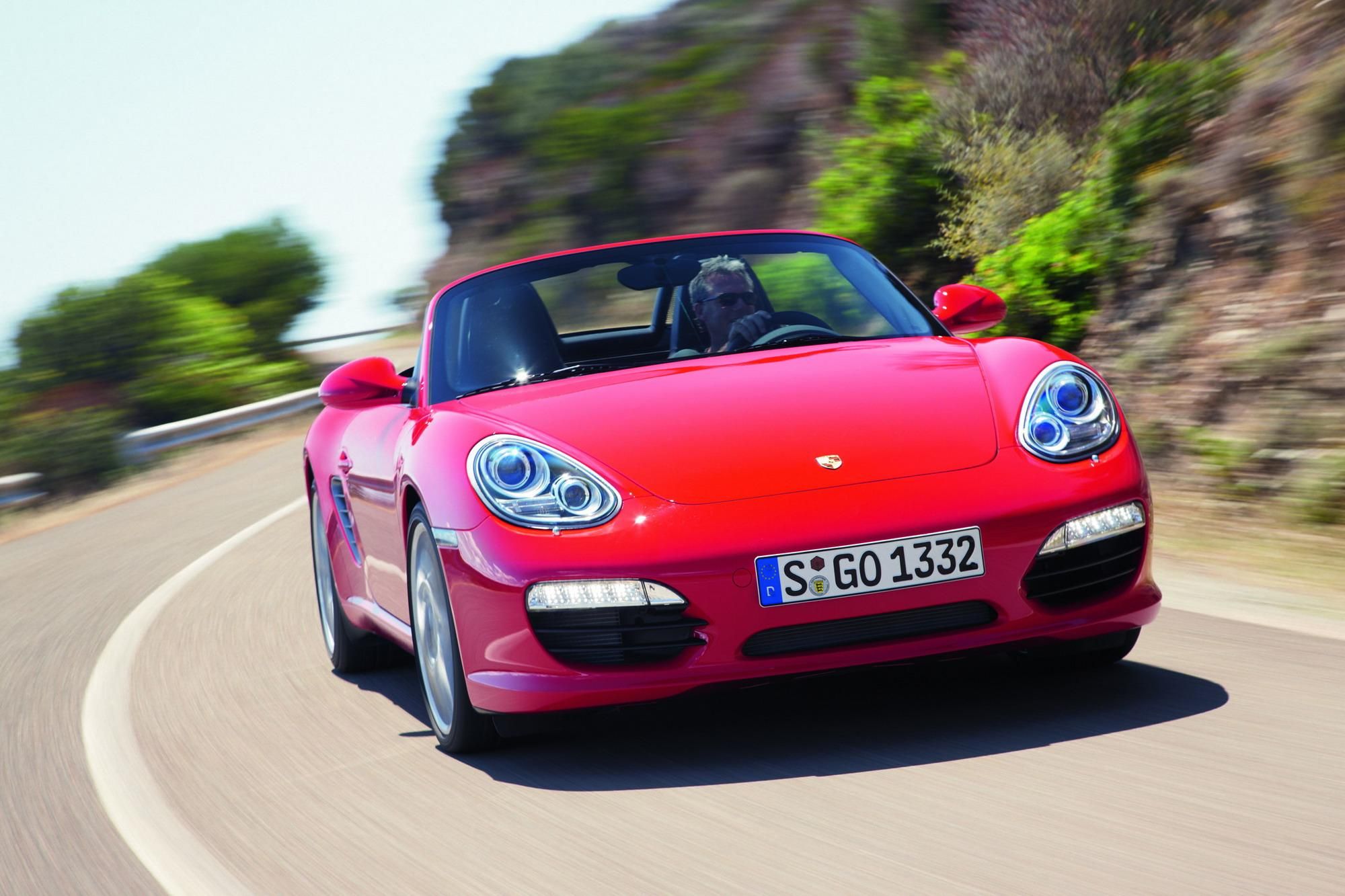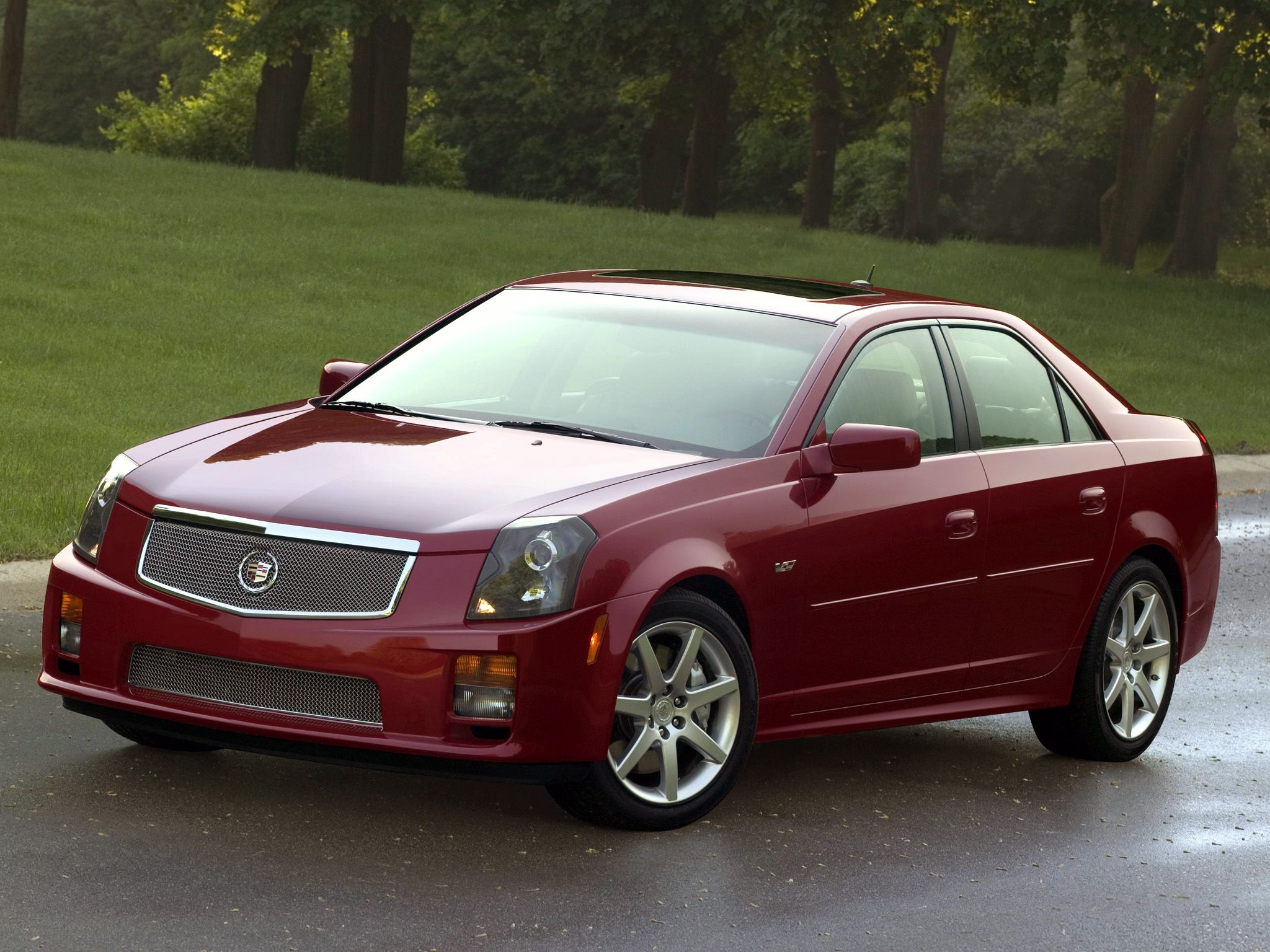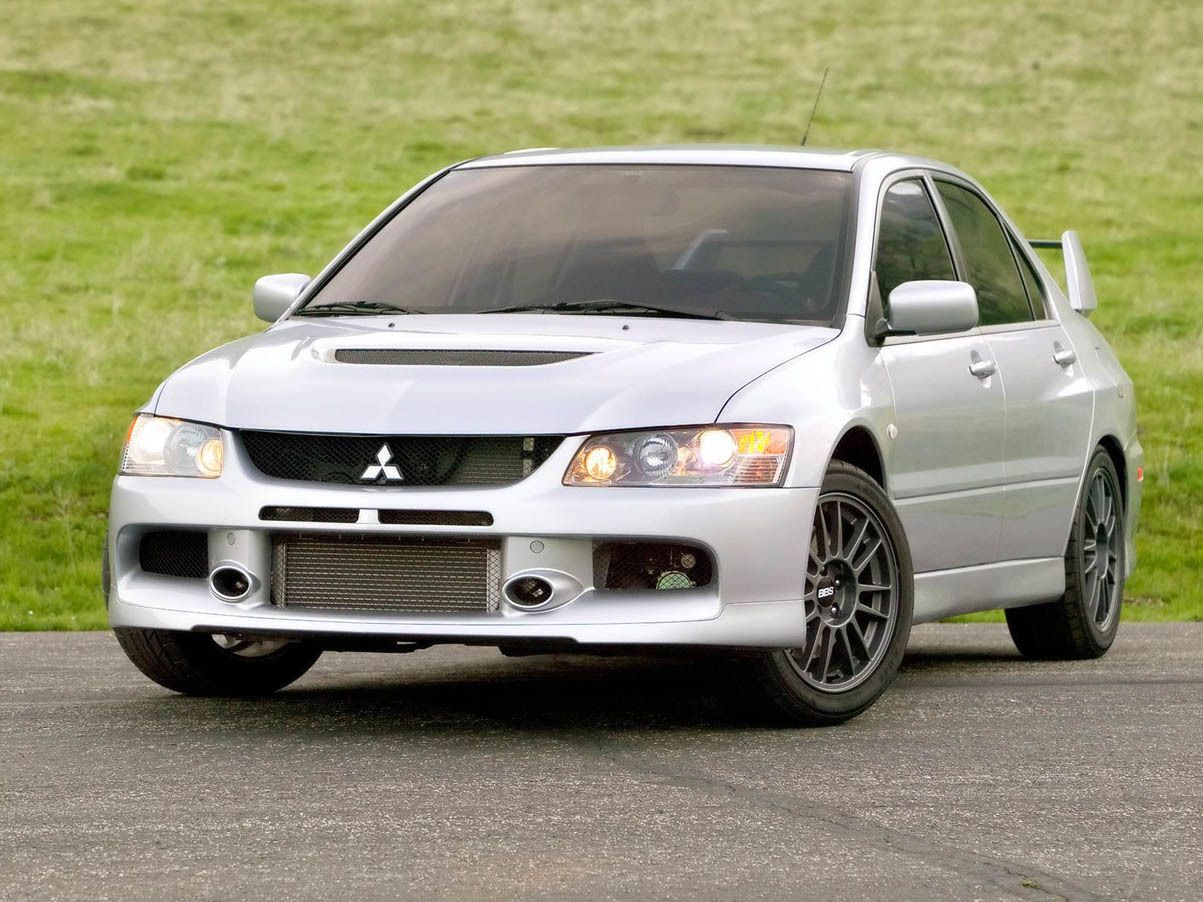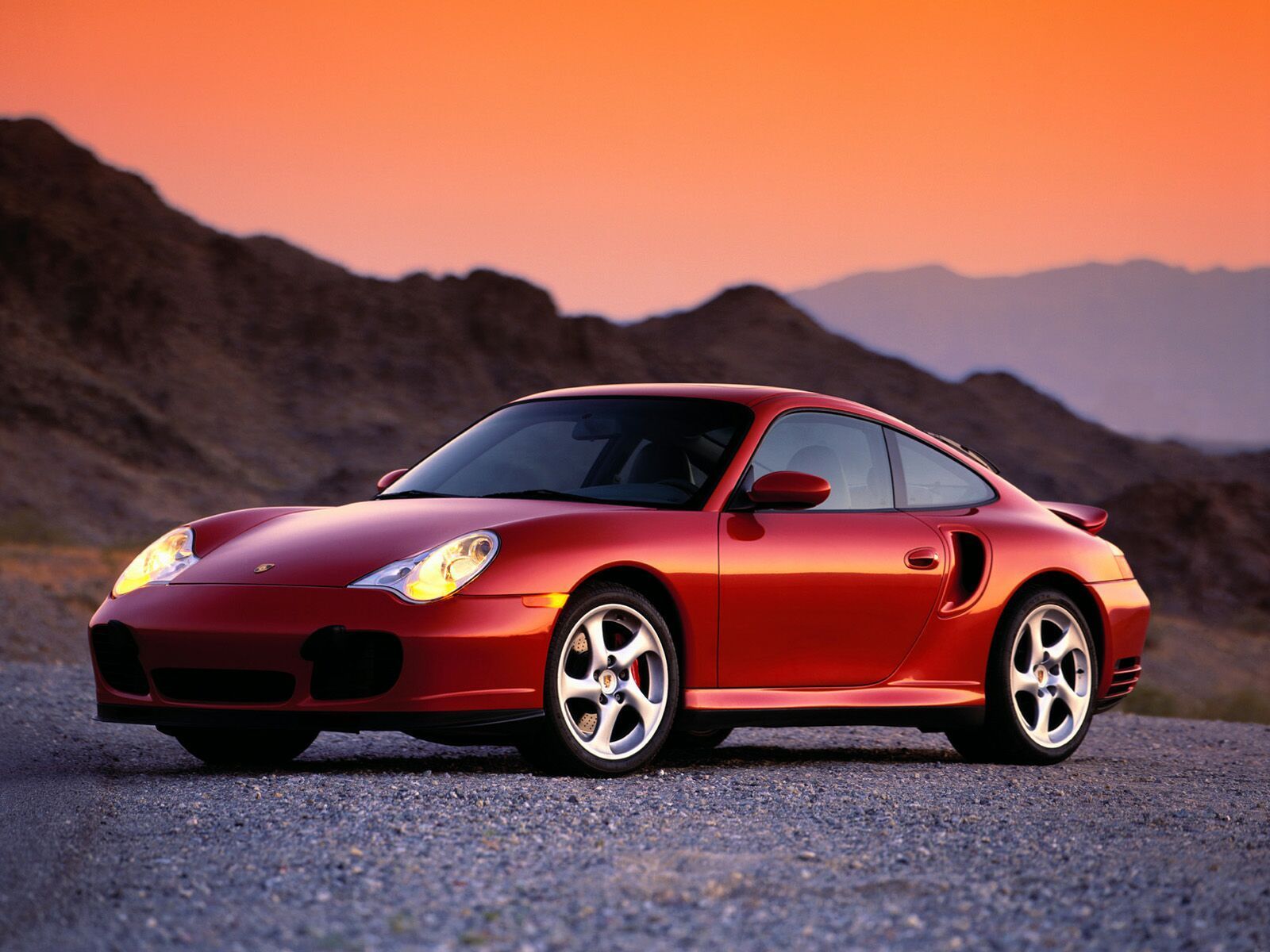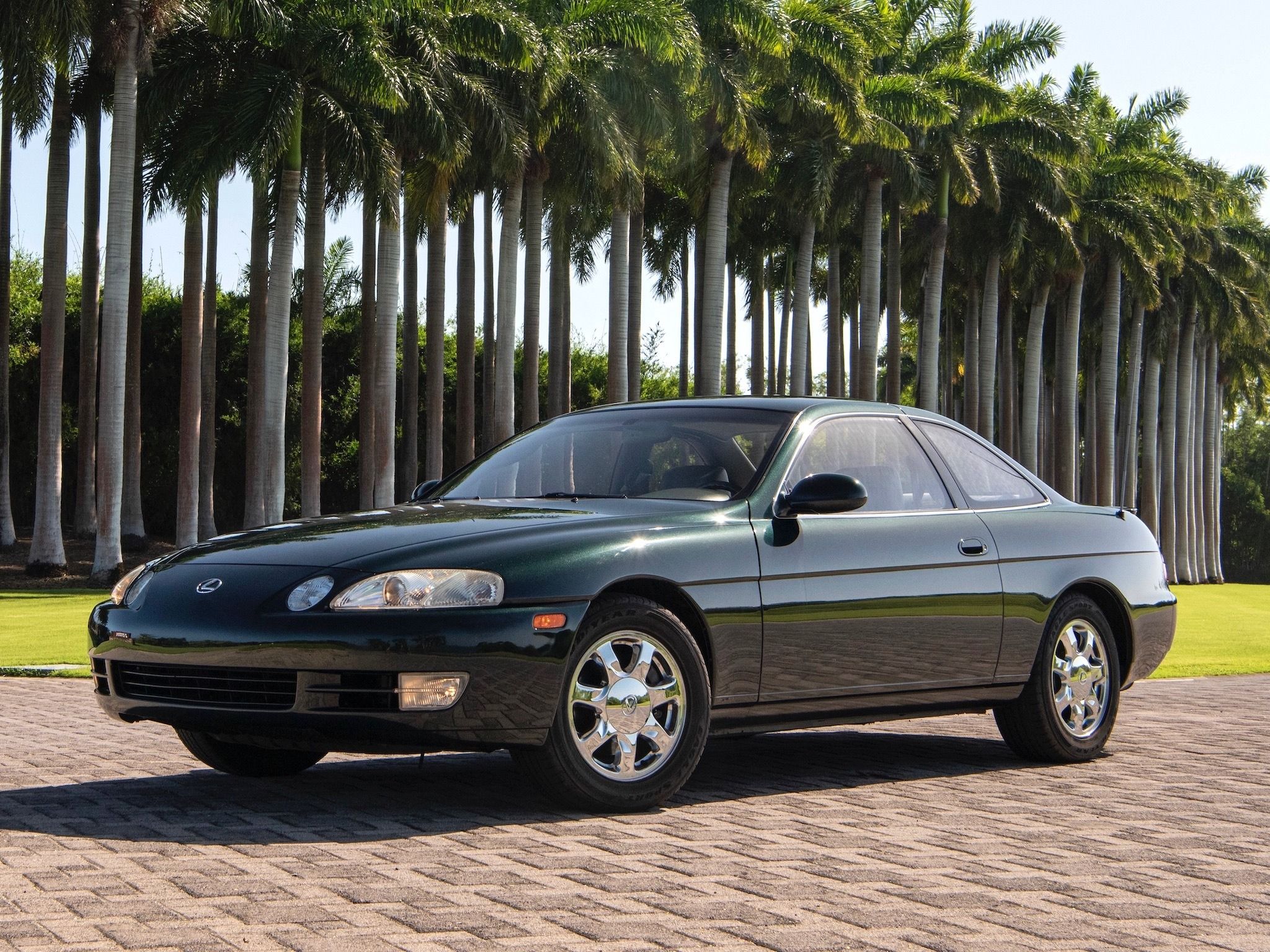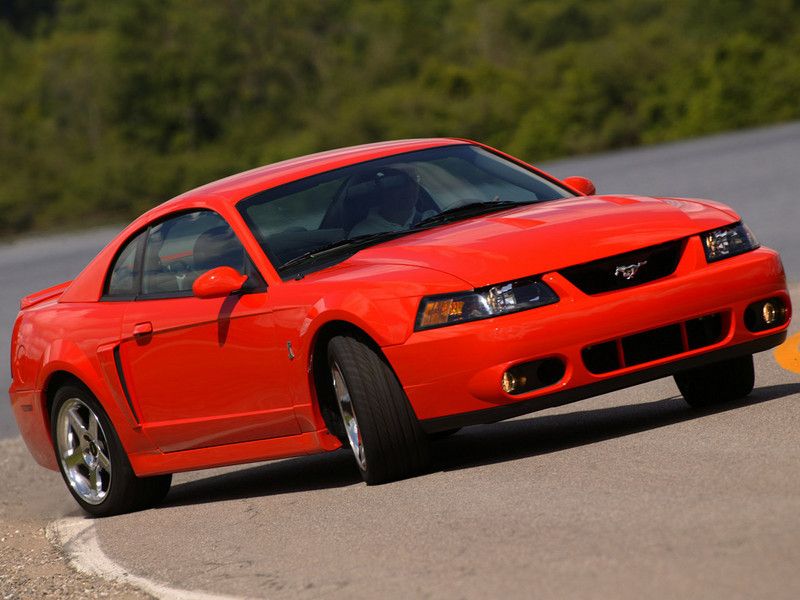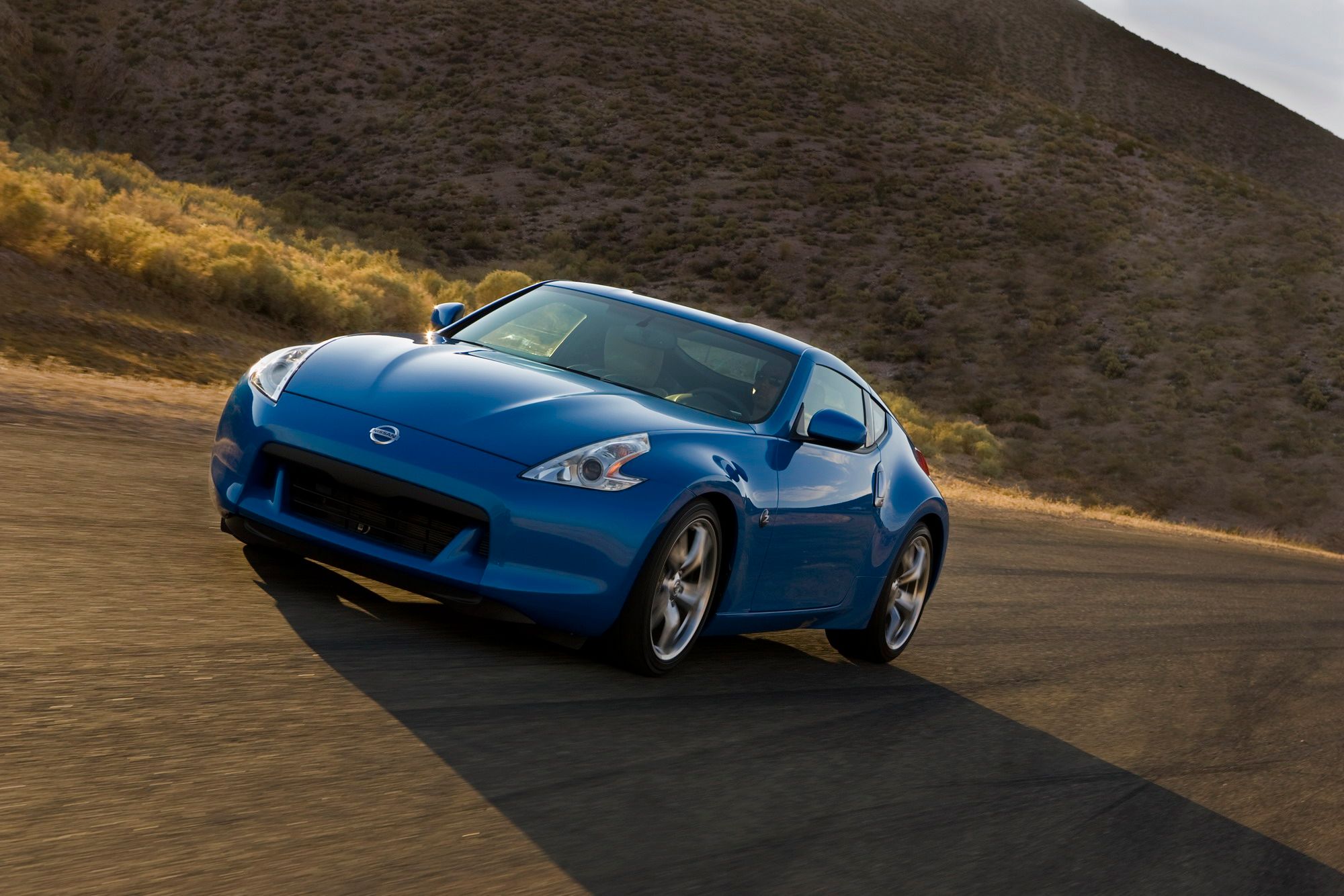There are a lot of benefits in buying a pre-owned car. Instead of being stuck on a particular segment due to budget constraints, you can actually choose a car from the higher tiers when you look at the used market. You don’t have to worry about the depreciation hit in the car as well. And, when it comes to fast, cool cars, you don’t have to wait for the run-in period to complete and you can redline it from day one. In fact, if you spend some time researching, you can find some real treasures as well. To help you out, we’ve listed ten of the fastest cars that you can get for less than $15,000.
2004-2007 Cadillac CTS-V
Back in the day, the Cadillac CTS-V was one of the hottest sedans on sale. The CTS-V hit the scene with a roar and came to steal the lunch from the likes of Mercedes-Benz E55 and BMW M5. The car was quick around the corners, stable on straight roads, and came with slick handling. Apart from boasting strong power output figures, the CTS-V also came with Brembo brakes, 18-inch wheels, and GM’s StabiliTrak stability control system. One of its selling points was the steering wheel that was light at lower speeds and offered precise feedback at high speeds.
Although manual gearboxes are a delight to use in fast cars and should’ve made the positive point in the CTS-V, this is where it suffered most. The shift is rubbery and throws are long. But, that said, it isn’t a deal-breaker. The car doesn’t enjoy a strong resale value, and hence, you can find mid-2000 examples for under $15,000.
2004-2007 Cadillac CTS-V specifications
|
Engine: |
5.7-liter, V-8 |
|---|---|
|
Transmission: |
Six-speed Manual |
|
Horsepower: |
400 HP |
|
Torque: |
385 pound-feet |
|
0-60 mph: |
4.7 seconds |
|
Top Speed: |
163 mph |
|
Drive Type: |
Rear-Wheel-Drive |
Read our full review on the 2007 Cadillac CTS-V.
2003-2006 Mitsubishi Lancer Evolution
The Mitsubishi Lancer Evolution was the pumped-up version of the standard Lancer. It came with double the power figures as well as double the sticker price. The Evo, as it’s fondly called, came with 271 horses at your disposal that helped you sprint to 60 mph in five seconds. It wasn’t just the straight-line handling here; the Evo thrived on the corners, too. With an all-wheel-drive system, reworked suspension system over the basic Lancer, and a stiffened chassis, the Evo was a hoot-and-a-half to drive. The interiors are pretty basic, but this car is all about how you connect with it on the road, and not about some fancy shenanigans.
The Recaro seats, Momo steering wheel, and the huge tachometer in the middle were enough to get you into the mood to swerve this car around. The early models came with a five-speed manual gearbox, but it clearly missed the sixth gear, which the engineers noticed and plonked in the succeeding model. All-in-all, if you want a car that can be chucked around and connects with you because you’ve seen it in literally every video game, the Evo fits the bill perfectly.
2003-2006 Mitsubishi Lancer Evolution specifications
|
Engine: |
2.0-liter, four-cylinder |
|---|---|
|
Transmission: |
Six-speed Manual |
|
Horsepower: |
271 HP |
|
Torque: |
273 pound-feet |
|
0-60 mph: |
5.1 seconds |
|
Top Speed: |
155 mph |
|
Drive Type: |
All-Wheel-Drive |
Read our full review on the 2006 Mitsubishi Lancer Evolution
1998-2004 Porsche 911 (996-Gen)
If you are an ardent Porsche fanatic, you will be infuriated as to why the 996 911 features on this list. It was arguably the most hated 911 of all time. It came with a set of cons - the water-cooled engine and the evident cost-cutting to make this a mass-produced car - that led to its downfall. But, it wasn’t that bad a car also. The 996 was quick off the line and handled well over the corners, thanks to the traction and stability controls. The 911, in general, is built to last, so if you get all the initial glitches of the 996-gen sorted, then this car is as reliable as it can get. You can race it around and have fun over the weekend, and then use it as your daily driver during the week. The car can do 0-60 mph run in around five seconds, and it came with a manual gearshift!
Word of advice: The 911 996 came with an intermediate shaft (IMS) bearing in front of the transmission. If this blows up, your engine could just detonate itself. So, check for it and make sure it’s replaced so that the engine is safe.
1998-2004 Porsche 911 (996-Gen) specifications
|
Engine: |
3.4-liter, six-cylinder |
|---|---|
|
Transmission: |
Six-speed manual |
|
Horsepower: |
296 HP |
|
Torque: |
258 pound-feet |
|
0-60 mph: |
5.2 seconds |
|
Top Speed: |
174 mph |
|
Drive Type: |
Rear-Wheel-Drive |
Read our full review on the 1998-2004 Porsche 911 (996-Gen)
1991-2000 Lexus SC
When you’re dealing at this price point, you can actually unearth some not-so-preferred cars that are actually decent vehicles. The Lexus SC is one of them. The car actually sold well and the clean design that boasted of a 0.31 drag coefficient was appreciated, but the car never found a strong footing because of its misplaced identity. The company tried to market it as a grand tourer with a sporty bias, but it was neither a GT, nor a sports car. It had competition from both the segments, both of them had better cars respectively, and the SC was lost in the mix.
On paper, the SC came with good specs. The first models churned out 250 horses, whereas later models produced up to 290 ponies. This generation that lasted for nine years saw multiple transmission options, including manual and automatic. The car came with Toyota’s reliability and if you hunt it right, you can find yourself a sweet deal.
1991-2000 Lexus SC specifications
|
Engine: |
3.0-liter, six-cylinder |
|---|---|
|
Transmission: |
Five-speed Manual |
|
Horsepower: |
250 HP |
|
Torque: |
260 pound-feet |
|
0-60 mph: |
6.8 seconds |
|
Top Speed: |
155 mph |
|
Drive Type: |
Rear-Wheel-Drive |
1999-2002 Ford Mustang SVT Cobra
What makes this SVT Cobra special is the independent rear suspension system. Period. Two decades later, the independent rear suspension is still not mainstream and Ford dared to offer it on a 1999 Mustang SVT Cobra at a fairly reasonable price, too. Thanks to this suspension setup, the car handles wonderfully on the curves, although the straight-line sprint isn’t as impressive. The gears have a good ratio and the car is fun to drive. There is ample power for you to take it to its top speed, and you also have enough grunt to have some twisty fun with it. Overall, this generation of the Mustang SVT is a great buy.
1999-2002 Ford Mustang SVT Cobra specifications
|
Engine: |
4.6-liter, V-8 |
|---|---|
|
Transmission: |
Five-speed Manual |
|
Horsepower: |
320 HP |
|
Torque: |
317 pound-feet |
|
0-60 mph: |
5.5 seconds |
|
Top Speed: |
149 mph |
|
Drive Type: |
Rear-Wheel-Drive |
Read our full review on the 2002 Ford Mustang SVT Cobra
2009-2016 Nissan 370Z
The 370Z came with unorthodox styling, but it turned heads on the roads anyway. The sports car came with a fantastic engine with enough power to plaster a smile on your face every time you went berserk on the A-pedal. The steering offered good feedback and felt precise, the brakes were confidence-inspiring, and the car handled well overall. Nissan offered it with manual as well as automatic transmissions. The gearboxes were just about okay and didn’t work wonders, but on a car this sporty, better boxes would’ve made it a flawless experience. On the inside, however, the 370Z is not spacious and doesn’t control the external noises well. However, the car was loaded to the gills in terms of comfort features. That said, the 370Z is a fun car to drive even today.
2009-2016 Nissan 370Z specifications
|
Engine: |
3.7-liter, V-6 |
|---|---|
|
Transmission: |
Six-speed Manual/Seven-speed Automatic |
|
Horsepower: |
332 HP |
|
Torque: |
270 pound-feet |
|
0-60 mph: |
4.9 seconds |
|
Top Speed: |
155 mph |
|
Drive Type: |
Rear-Wheel-Drive |
(There’s a Nismo for less than $14,000)
Read our full review on the 2009-2016 Nissan 370Z
1998-2003 BMW M5 E39
In my opinion, the E39 was one of the best looking Bimmers ever. The design language was completely different from what it is today. The M5 is truly an enthusiast’s car, but what made the E39 special was that it was the first M production-car to feature a V-8 mill. The naturally-aspirated engine was quick off the line and had oomph all the way up to the modestly-marked 7,000 rpm redline. The car performed brilliantly in a straight line, curved roads, and corners. The E39 had a refined powertrain with enough grunt being sent to the wheels. Power was sent to the rear wheels via a six-speed manual transmission. Unlike its predecessors, the E39 didn’t come with an all-wheel-drive configuration.
The strong V-8 engine was the first one in M models, so there are bound to be some glitches. For starters, the lack of a screw in the solenoid covers in the early examples triggered nasty engine vibrations. BMW did fix it later on. It is also notoriously known for carbon build-up and poor timing chain components as well. So, as long as you’re aware of these problems and get them fixed in a timely manner, the E39 could be one of the best buys for you.
1998-2003 BMW M5 E39 specifications
|
Engine: |
4.9-liter, naturally-aspirated, V-8 |
|---|---|
|
Transmission: |
Six-speed Manual |
|
Horsepower: |
394 HP |
|
Torque: |
369 pound-feet |
|
0-60 mph: |
4.8 seconds |
|
Top Speed: |
155 mph |
|
Drive Type: |
Rear-Wheel-Drive |
Read our full review on the 1998-2003 BMW M5 E39
2005-2012 Porsche Boxster (987-Gen)
This was the second-gen of the Porsche Boxster and came with a whole lot of changes. Unlike the first-gen 986, the Boxster 987 looked more Porsche-like and was a better-looking package overall. The mid-engined car drove pretty well and had the typical driving dynamics that Porsche is known for. The car comes with many nifty touches all around, like access to the battery, oil filler, and coolant tanks through the trunk, and adjustable rear spoiler. The 987 was, however, known for horror stories with regard to the cylinder bore scoring and the failure of IMS bearing, although not to the extent of the 911 996’s failure.
The manual gearbox is smooth, slick, and slots perfectly in the well-defined gates. The little car is fun-to-drive around the corners as it is in straight lines. Even though it is a fast car, it is not quick off the line compared to the other cars in this list. The Boxster 987 takes 6.2 seconds to sprint to 60 mph from a standstill. With that said, this one, too, can be taken to the circuit over the weekends and to the office on a weekday.
2005-2012 Porsche Boxster (987-Gen) specifications
|
Engine: |
2.7-liter |
|---|---|
|
Transmission: |
Five-speed manual, five-speed auto |
|
Horsepower: |
236 HP |
|
Torque: |
199 pound-feet of torque |
|
0-60 mph: |
6.2 seconds |
|
Top Speed: |
159 mph |
|
Drive Type: |
Rear-Wheel-Drive |
Read our full review on the 2005-2012 Porsche Boxster (987-Gen)
1997-2004 Chevy C5 Corvette
The C5 brought in a lot of changes for the Corvette as a “brand”. It was a new model after a decade-long preceding generation that came with a stiffer and lighter architecture and set the tone for future models to be made. It can be considered as the iPhone 6 of the Chevy world. The legendary sports car came with a rear-mounted transaxle that was witnessed in the Porsche 944 and the Ferrari Daytona as well and it helped Chevy achieve a near-perfect weight distribution. The new design language and architecture meant that the C5 Corvette boasted a drag coefficient of just 0.29. The 5.7-liter, V-8 engine was paired to a six-speed manual as an option and a four-speed automatic as standard. Our pick, of course, would be the former.
1997-2004 Chevy C5 Corvette specifications
|
Engine: |
5.7-liter, V-8 |
|---|---|
|
Transmission: |
Six-speed Manual |
|
Horsepower: |
345 HP |
|
Torque: |
350 pound-feet |
|
0-60 mph: |
4.8 seconds |
|
Top Speed: |
175 mph |
|
Drive Type: |
Rear-Wheel-Drive |
Read our full review on the 1997-2004 Chevy C5 Corvette
2004-2006 Pontiac GTO
The Pontiac GTO may be the dullest looking for a car in this list, but don’t underestimate its performance specs. The sleeper comes with a 5.7-liter, LS1 engine from the Corvette, but feels even more sprightly and fun, perhaps because you don’t expect it to be such a good performer. The manual gearbox comes with a light clutch and short gear throws, but they aren’t as precise as you’d expect in a fast car. There is the first-to-fourth gear bypass annoyance here, which basically uses a solenoid in the transmission to force the first-to-fourth shift when you are driving with around 35-percent throttle or less between 15 and 21 mph. Other than this, the car handles well, is a corner-carver, and comes loaded on the inside as per 2004 standards.
2004-2006 Pontiac GTO specifications
|
Engine: |
5.7-liter, V-8 |
|---|---|
|
Transmission: |
Six-speed Manual |
|
Horsepower: |
350 HP |
|
Torque: |
365 pound-feet |
|
0-60 mph: |
5.3 seconds |
|
Top Speed: |
155 mph |
|
Drive Type: |
Rear-Wheel-Drive |
Read our full review on the 2006 Pontiac GTO

